Iran’s largest big wall, Bisotun Big Wall, is a rock climbers’ paradise. With over a hundred different routes, this 5-kilometer limestone wall is sure to challenge each and every rock climber. So, if you are looking for a climbing destination where you get to evaluate your skills on different routes and enjoy the technical safety, Bisotun would be your best option. This 1200-meter vertical rock has been hosting great rock climbers from around the world. And today, it is inviting climbers from around the globe to its beauty, variety, and challenge. Considering Bisotun as your next climbing destination?! So, here’s all you need to know about Bisotun big wall, its routes, its huts, its ascent guide, the international rock climbing festival held there, and more…
Contents
Mount Bisotun
Thirty kilometers to the city of Kermanshah, you’ll find Mount Bisotun (also known as Mount Behistun). Bisotun Big Wall is on the southern face of this beautiful mountain. The wildlife is rich and you might catch sight of birds and animals like leopards, rabbits, mouflons, etc. The mountain is also rich in plant life, especially trees like junipers. Part of the mountain is also a precious UNESCO world heritage. Darius the Great’s memento, the 2500-year-old Behistun Inscription, is the top historical jewel on Mount Bisotun. Besides, the Statue of Hercules and the historical caravanserai are of the other attractions on Bisotun. After your epic rock climbing adventure, checking out these ancient relics and listening to the mountain’s legendary stories will be a pleasant cultural twist.
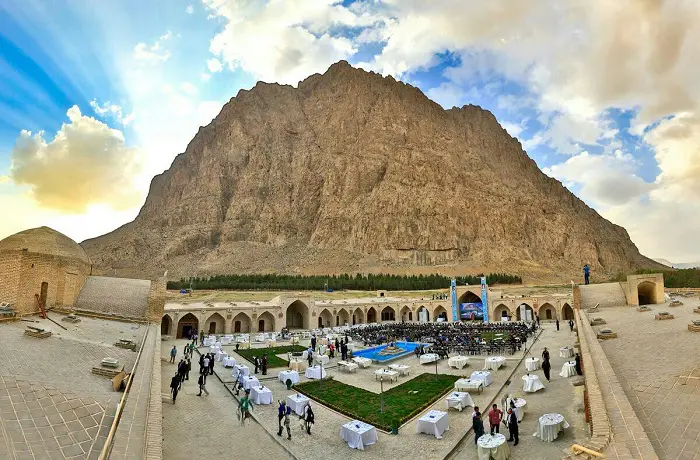
Bisotun Big Wall as a Climbing Destination
With a 5-thousand-meter width, 1200-meter vertical rock and 2800-meter altitude from sea level, Bisotun Big Wall is one of the world’s largest big walls. These features, beside its accessibility, providing friction for a good climb, and having more than 100 different routes of various difficulty levels have made Bisotun Big Wall one of Iran’s most precious rock-climbing destinations. Bisotun big wall isn’t just one of the world’s biggest rock walls, it is also Iran’s safest big wall. The reason is that its being made of limestone reduces the risk of unstable and falling stones.
Plus, the 3 huts that exist on the wall not only make an ascent plan more simple but also create the opportunity of bivouacking. In fact, Bisotun is the only big wall in Iran where you can experience bivouacking. All these features led Bisotun Big Wall to become a host to a Biennial Climbing Festival. Every 2 years, eminent rock climbers from around the world gather together on Bisotun to challenge their abilities and skills. Like to find out more about this festival? Read on then…
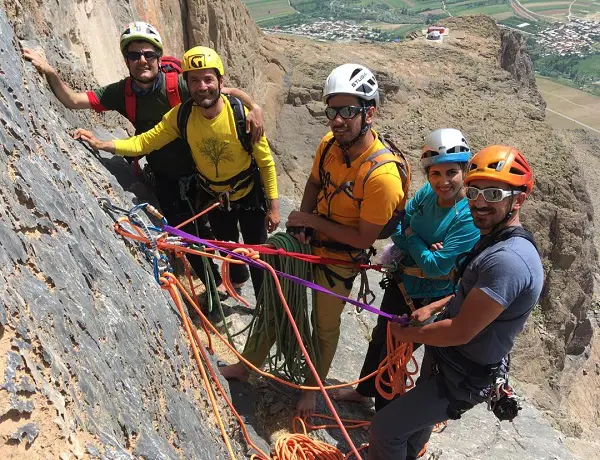
Biennial Climbing Festival on Bisotun Big Wall
The striking variety and potentials of Bisotun Big Wall made Iranian and French climbers come up with the idea of holding a rock climbing festival there. So, their collaboration led to Bisotun Biennial Climbing festival, and event that has been attracting a considerable number of climbers since 2010. It was during these festivals that a French climber prepared topographic maps of Bisotun’s top routes (you can find a number of these maps below). Plus, during the festivals, climbers also opened up new routes , one of which is the famous Jashnvareh (festival) Route. In 2018, sports like highlining, BASE jumping, and wingsuit flying were also added to the festival.

World-class climbers like Ales Cesen, Angelika Rainer, Marko Prezelj, Manu Pellisier, Leslie Fucsko, Hubert Giot, Sam Beaugey, Anna Ahlund, Marko Servalli, and the wingsuit flyer Graldine Fasnacht have taken part in this event. The event takes 8 days and after enrollment, the participants are provided with facilities like accommodation, transportation service, and food.
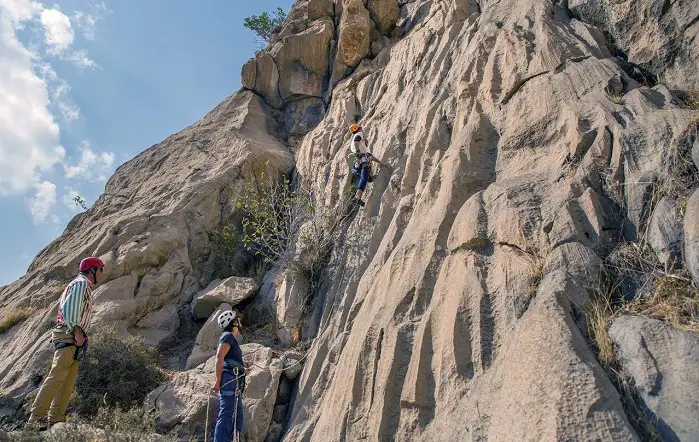
The Routes on Bisotun Big Wall
1200 meters of height and 5 kilometers of width have blessed Bisotun with a prominent variety of routes, the most important and popular of which I’m going to introduce you to. The 1200-meter height of this big wall is divided into 3 sections (or stairs). The first stair is 1500 meters from the sea level, the second is 2000 meters from the sea level, the third is 2300 meters from the sea level, and the summit has an altitude of 2800 meters. To go beyond the first stair, a complete familiarity with the route you have chosen is necessary. So, you need to have an experienced guide beside you for your first ascent of some routes. Lengthwise, the wall is also divided into sections, the most famous of which are Level Sakht, Darreh Khoosheh, Noghreh Darreh, Kalkhosh, and Sar-e Herkool.
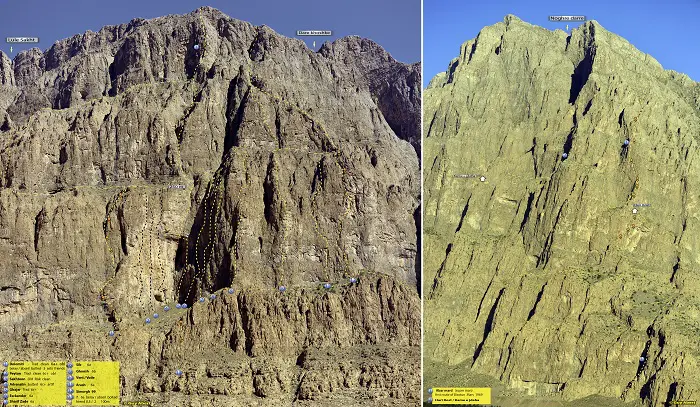
With over 100 different routes that can please climbers of various abilities and styles, Bisotun still offers the potential for opening up new routes. The most famous routes on Bisotun Big Wall are Gharargah (camp), Oghabha (eagles), Dariush, Gozasht, Harry Rost, Kariz, Shirin, Sharifzadeh, and Negin. The first route on Bisotun was set by a climbing team known as Superhuman. This route is now named after Harry Rost, the famous Austrian climber.
Instead of telling you about Bisotun’s top routes, I’ve gathered a practical gallery of their topographic maps. These maps can give you a more accurate knowledge of the routes. In any case, if you need further information or have a question from our guides or professional trainers, don’t hesitate to drop us a comment or message.
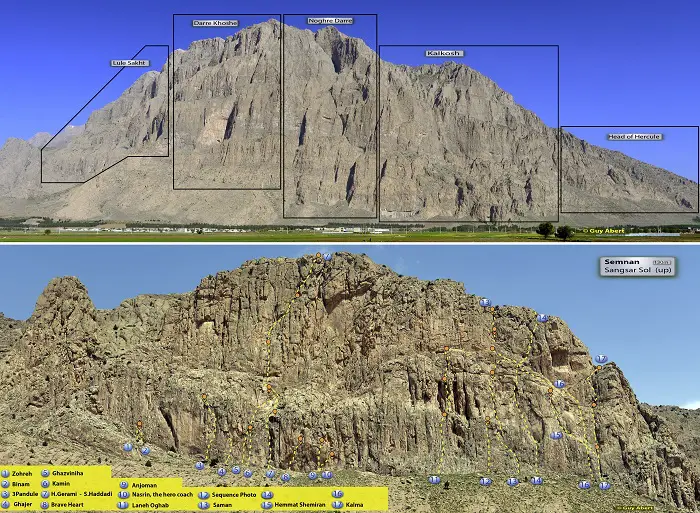
The Huts on Bisotun Big Wall
There are 3 huts on Bisotun big wall:
- Panahgah-e Avval (The First Hut or Harry Rost Hut): this hut is to the east of the wall, after Harry Rost and Khaneh-ye Koohnavardan (Mountaineering House) traverse routes. It is 400 meters from the base of the wall.
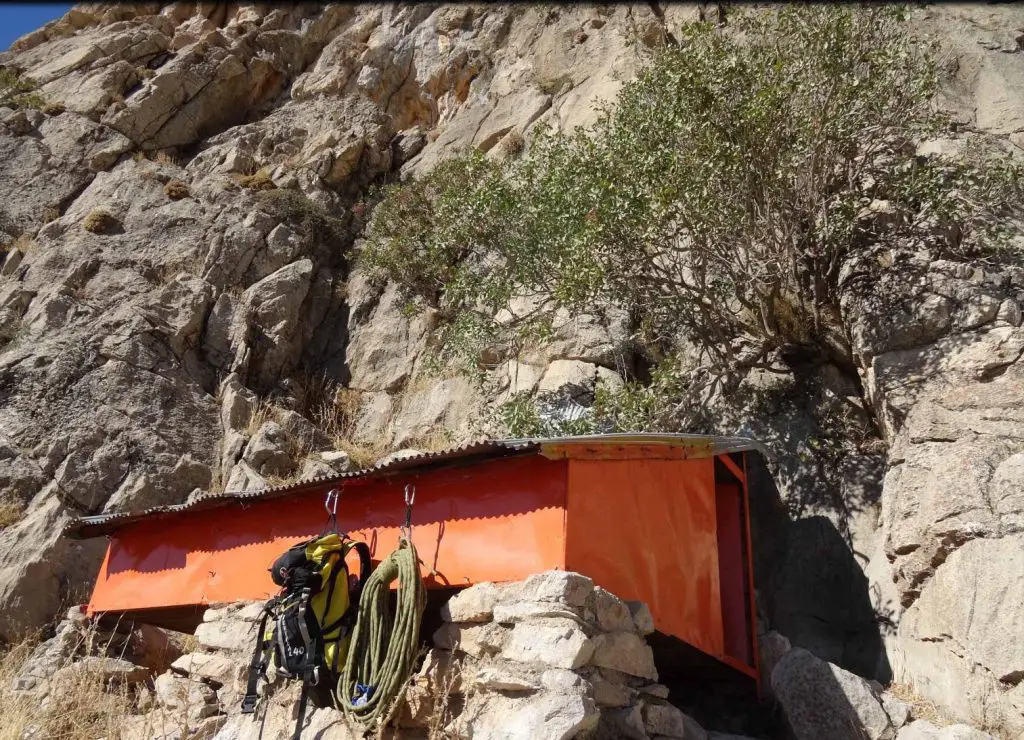
2.Gharargah (Kam-e Ezhdeha) Hut: this hut (1800 meters from sea level) is in the central section of Bisotun Big Wall and near the end of Gharargah Route. It is 500 meters from the base of the wall and can shelter up to 8 people.
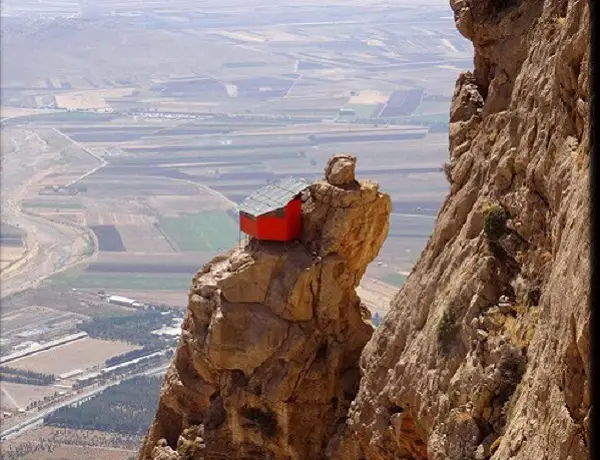
3. Yalsakht Hut: this hut (2270 meters from sea level) is to the west of the wall, midway on Yalsakht, Alipour and Ahangar routes. It is 600 meters from the base of the wall and can shelter up to 6 people.

Bisotun Big Wall Ascent Guide
For a rock climbing experience on Bisotun Big Wall, you’ll first have to get to the city of Kermanshah. The big wall is located around 30 km to Kermanshah, near the town of Bisotun. Right beside the wall, you can find a historical caravanserai that is now turned into a nice hotel where you can spend the night. Depending on your ability and style, and how long you intend to stay, you may go ahead with different ascent plans.
If you like to try different routes and spend the night off the wall, Kariz Route (5.10 B- 5.10 C) and Farda Route (5.11 D) are suitable routes for a one-day schedule. You can also try the other routes the following day. But if you like to spend the night on the wall, there are other routes that lead you to the huts and bivouacking at a 2000-meter altitude. Harry Rost and Gharargah Hut are at an almost equal altitude and a 2.5-km traverse connects them to each other.
Depending on your skill level, you can choose one of these huts for your bivouacking experience. Access to the Harry Rost (first) Hut is easier and the route that leads to it is Harry Rost Route (5.10 B). The more scenic Gharargah Hut is accessible through the more difficult Gharargah Route (5.10 C). Except for these two huts, you can also pick Yalsakht Hut which is on the Level Sakht Section (the west side of the wall). This hut is accessible through two different routes: Sepelleh Route and Yalsakht Route. Sepelleh Route starts from Bolvardi Village and requires a few hours of trekking. Note that you can scarcely find water on the wall, so you need to carry enough water with you.
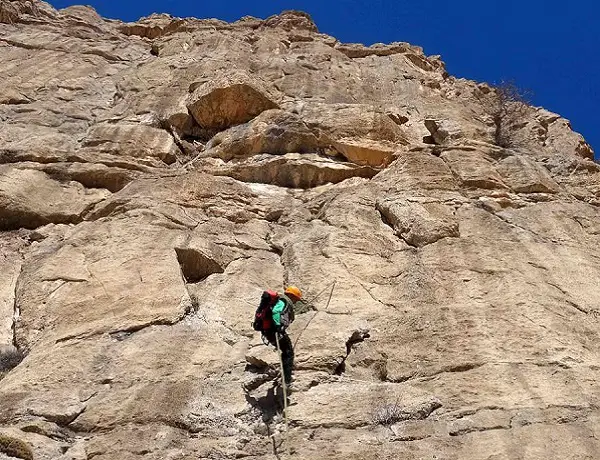
The Best Season for Ascending Bisotun Big Wall
The best time for rock climbing and hiking in this region is in spring, late summer and early fall. At this time, on the famous routes on Bisotun big wall, you’ll recurrently confront a traffic of climbers climbing together. Bivouacking on Bisotun is so enjoyable that spending one night there could be a once in a lifetime experience.


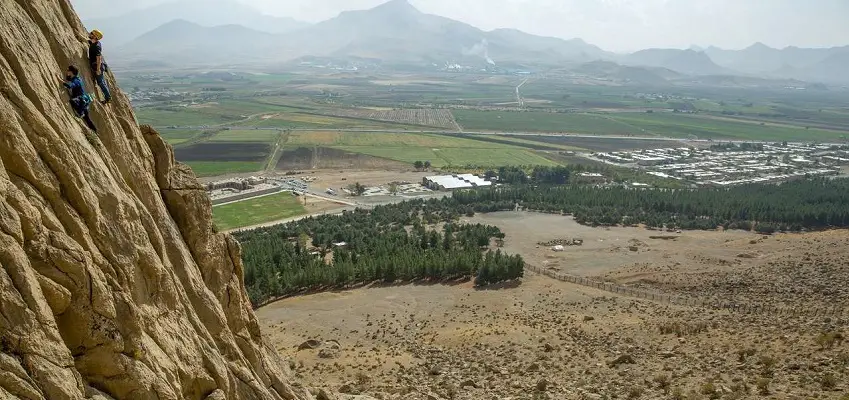
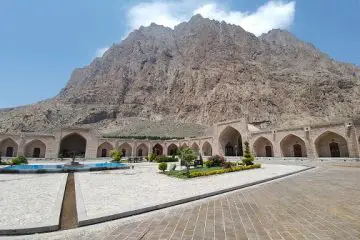
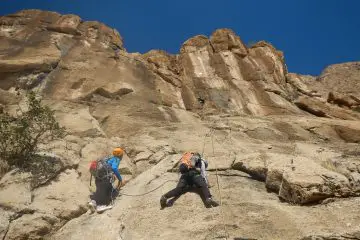


Comments